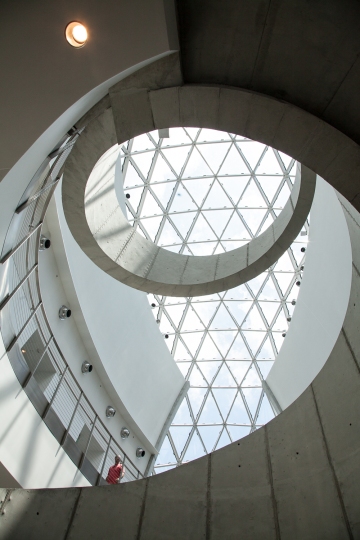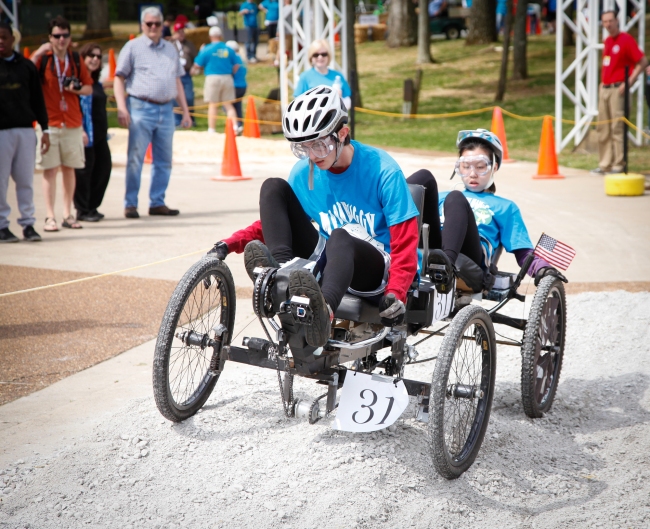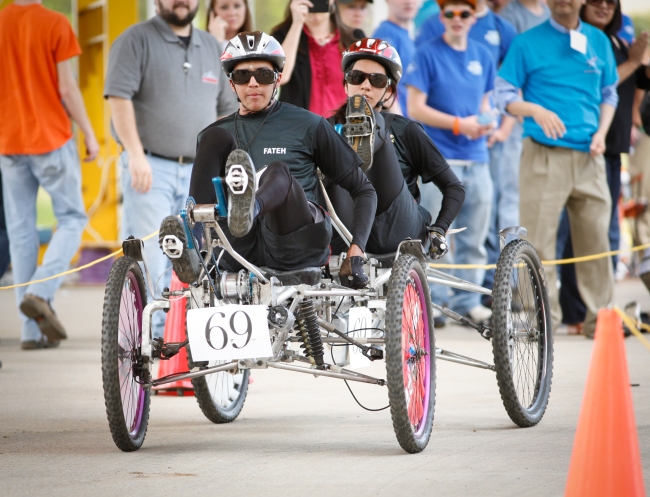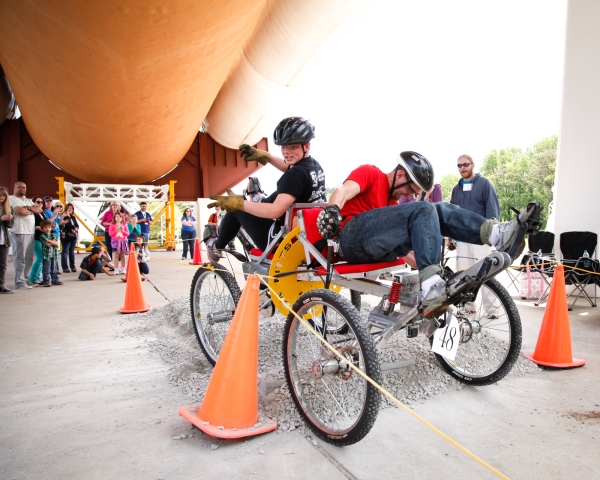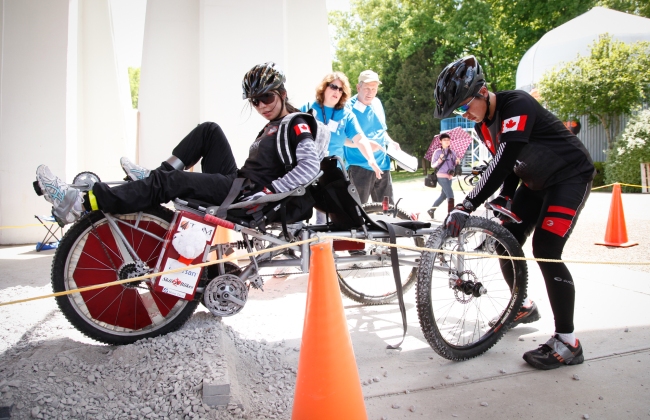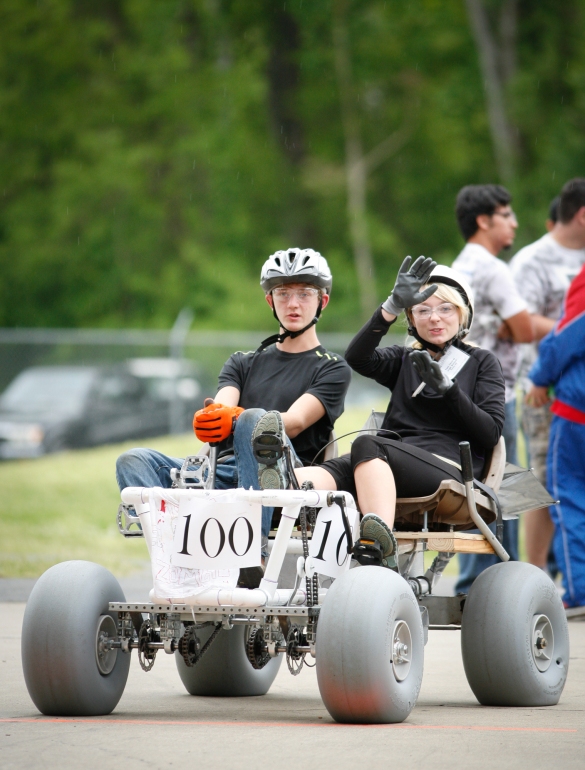The Dali Museum
Last week I was in the Tampa- St. Petersburg area. My wife, Sharron had to undergo parathyroid surgery. In our research, we found out that the Norman Parathyroid Center at Tampa General Hospital was the place to go. This is not that common a procedure and where we live in Alabama the local hospitals perform this type of surgery rarely. We figured that we might want to go where they do it on a more routine basis. At Tampa General’s Parathyroid Center they perform this operation every day. In fact, it is the only operation they do perform – over 2600 annually with a claimed success rate of 99%. That sounded pretty good to us, so we decided to go there. Besides, my wife’s mother lives in nearby St. Petersburg which would provide a convenient place for her to rest up following the procedure. Recovery is not a long affair. The operation to cure hyperthyroidism is day-surgery, performed through a small slip at the base of the throat. After a brief stay in the recovery room, Sharron was free to leave. Unfortunately, her case was a bit unusual in that her tumor was so old (est. 12 years) that it had time to envelop her vocal cords. The doctors had to resort to using a microscope and laser to cut away all the tumor and affected parathyroid gland. Her ability to speak would be impacted, but the doctor assured us that it would improve gradually in time. Rest was the best cure, so Sharron was instructed not to speak unless necessary and not to attempt to scream. Every cloud does have a silver lining it seems.
So, while Sharron was convalescing at her mother’s house, I managed to slip out one day to photograph the new Salvador Dali Museum in St. Petersburg. I had been to the original Dali museum there several years ago. In fact, I have also visited the Dali Museum in Figueres, Spain, so I was already pretty familiar with Dali’s surrealistic work. To be honest, I really was more interested in seeing the new building, an ultra-modern amalgamation of steel, concrete and glass. As with most museums, cameras are not permitted in the galleries, so I concentrated on the building’s organic exterior and atrium, which I was allowed to photograph.
The Dali draws its inspiration from several architectural masterpieces such as the Guggenheim Museum, the National Gallery’s East Wing, the Louvre’s Pyramid and Louis Kahn’s Kimbell Museum to name a few. But, although it may draw upon these other structures, the Dali is like no other building. The focal point of the interior is the Helical Staircase, a twisting ribbon of concrete and steel which seems to defy gravity. It took ten successive pourings of concrete to fabricate these stairs. The structure gives a nod to Dali’s fascination with the discovery of the DNA molecule. The staircase has been described as a turbine from which the rest of the museum draws its energy.
The staircase twists a full two and three-quarters rotations, but the helical spiral keeps going, rising to a point where it almost touches the “dome of the sky.” The stairs connect to the third floor galleries and the observation platform on the east side of the building which provides a spectacular view of Tampa Bay through its generous use of triangular-shaped glass.
The architect’s extensive use of glass may have caused the project developers some anxiety. After all, this site has seen its share of hurricanes throughout the years. Would glass pose a threat to the extensive and priceless artwork housed within its walls? A special double thickness of geodesic glass with an argon insulation was designed for all 1062 separate triangular pieces. No two pieces of glass are the same size or shape and it is the first major building in the Americas to employ this technology. It has been thoroughly wind and hurricane tested. Buckminster Fuller’s geodesic dome is the basis for the glass chrysalis including the bay vista space called the Enigma. The glass is self-supporting with hexagonal arrangements of triangles and the Enigma pays homage to the geodesic dome Dali placed over his own theater-museum in Spain.
Although the structure is an architectural wonder and succeeds in looking like no other, it functions well but is not overwhelming. The galleries are smartly laid out with ample room for the extensive collection and pieces do not seem crowed even though some of Dali’s works are truly massive, including a pixelated portrait of Abraham Lincoln which one must view from sixty feet away in order to discern. The building houses not only art galleries but an auditorium, classroom, cafe and one of the largest museum shops I have ever seen. It sells Dali posters, prints, postcards, t-shirts and everything else related to the Spanish master. Equal care was paid to the design of the grounds which incorporate a number of innovations, creating some unique outdoor spaces such as a labyrinth and a fountain of youth. Large metamorphic stones brought from Dali’s native Catalonia dot the landscape and are strategically placed to lead the way for the art lover into the magnificent building.
Mishaps and Moonbuggies
I recently had an opportunity to do a bit of photography for my former employer – NASA. Actually, I was never a direct NASA hire, but I did work for several contractors who were. With budget cutbacks and Sequestration affecting the space agency, as with other government entities, they sometimes find themselves understaffed for certain high-profile events. That’s when they call me to see if I’m available to help fill in. Last week, I helped cover the Student Launch Projects, better know simply as SLP. College and high school student teams from across the country gather at a remote farm in North Alabama to launch rockets they have built. The ones that go the highest win prizes. It brings to mind the exploits of the “Rocket Boys” captured in the film “October Skies”. The book’s author, Homer Hickam, who lives in Huntsville, officially kicked off that event.
The NASA event I helped out on this past weekend is called the “Great Moonbuggy Race.” I’ve helped photograph it several times before. As with SLP, students from both high schools as well as colleges compete, but this event has a much more international flavor with teams coming from all over the globe. This year there were teams from as far away as Russia, India, Germany and Puerto Rico. The Puerto Ricans sent several teams in both the high school and college categories. They ended up winning first place in the college competition by coming in with the fastest combined time.
Participants are required to construct a vehicle based on the design of the original moonbuggy, the one that traversed the surface of the moon during several of the U.S. lunar landings. The vehicle must conform to certain size limitations and must be only human-powered. It must carry two crew members (from a group of six) over a half mile course out at the Alabama Space and Rocket Center in Huntsville, Alabama. Points are awarded for speed in assembly, safety considerations and the time it takes to make two separate course runs over the two-day competition.
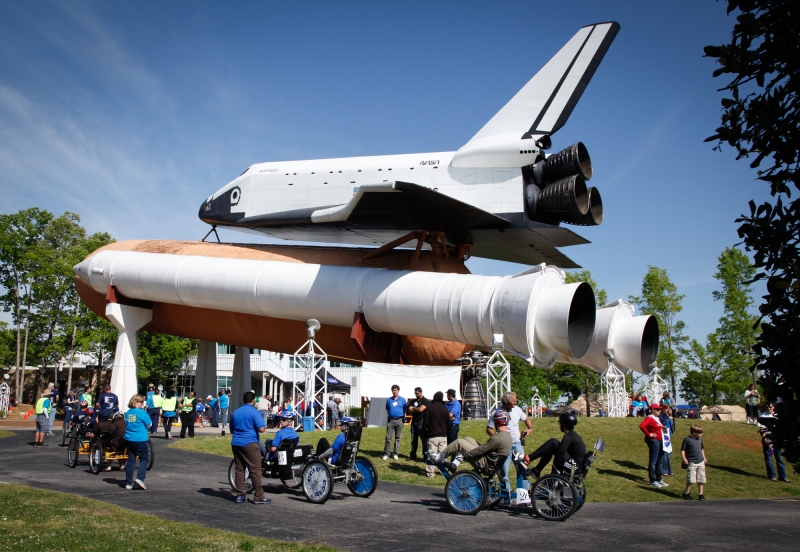
Moonbuggies prepare for the start of the race under the shadow of a Shuttle mockup at the Alabama Space & Rocket Center.
The course that the buggies must follow includes a number of hazards and obstacles including a portion that simulates the surface of the moon itself. The vehicles must be constructed strong enough to withstand the punishment of the moguls, sandpits and craters, but light enough for two people to be able to carry it to the start line and pedal it over the undulating terrain. Some teams do it with relative ease, while others experience bent wheels, broken bicycle chains and worse, as they try to make it completely around the track.

Team Russia representing the International Space Education Inst. easily negotiates the course finishing second in the college category.
These vehicles are considered test vehicles, not production models and as such are allowed to make modifications just before and between races. Make-shift garages are set up in the adjacent parking lot of the space center. Sparks fly as teams makes constant adjustments and fine-tune their buggies. Unfortunately, even the seemingly best built vehicles can’t stand up to the punishment that the course inflicts. Many teams’ buggies are rendered undriveable even after the very first obstacle. If the drive-chain breaks and is unrepairable on-the-fly, participants must resort to dismounting and pushing their buggy the rest of the way, a physical challenge to say the least.
The year’s winners:
High School 3rd Place: Jupiter High School Team 2, Jupiter, Fla.
High School 2nd Place: Jupiter High School Team 1, Jupiter, Fla.
High School 1st Place: Teodoro Aguilar Mora High School Team 1, Puerto Rico
College 3rd Place: Middle Tennessee State University Team 1, Murfreesboro, TN
College 2nd Place: The International Space Education Institute, “Team Russia,” Leipzig, Germany
College 1st Place: University of Puerto Rico-Humacao, Humacao, Puerto Rico


